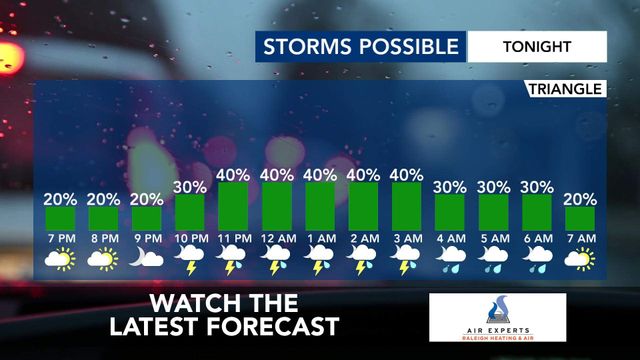Growing Latine population in schools creates an educational opportunity

This article was written for our sponsor, Participate Learning
The U.S. The Department of Education’s Institute of Education Sciences estimates that by 2030, Latine students will make up 30 percent of public school enrollment nationwide. As this population grows across North Carolina, Participate Learning is working with partner schools to prepare for this growth as part of the organization’s mission to support all students.
In its 2020 Census profile of North Carolina, the National Association of Latino Elected and Appointed Officials looked at the state’s 10 largest counties and cities over the last decade and called out the following figures when it comes to North Carolina’s Latine population growth:
- The population increased by nearly 40 percent in the last decade, from 800,120 to 1.1 million.
- The growth accounts for 35 percent of the state’s total population growth since 2010.
- In 2020, 35 percent of North Carolina Latinos were under 18, compared to 20.3 percent of non-Latinos.
With that kind of boom, classrooms across the state are evaluating how to best serve this growing population. At Participate Learning that means a number of things including hosting more exchange teachers from Spanish-speaking countries and partnering with schools across North Carolina offering dual-language programs, which provide a wide range of academic benefits to all students, including those who speak Spanish at home.
"Participate Learning is well positioned to help serve the growing Latine population," said Alison LaGarry-Cahoon, Research and Evaluation Director for Participate Learning. "We believe all students should see themselves reflected in their teachers."
Through Participate Learning’s Ambassador Teachers program, North Carolina schools currently host 800 teachers from Spanish-speaking countries. According to LaGarry-Cahoon, most of those teachers came from Central and South America. North Carolina schools currently host exchange teachers from 11 different Latin American countries.
That number, LaGarry-Cahoon said, makes up 30 percent of the Latine teacher workforce in all of North Carolina.
LaGarry-Cahoon shared that the majority of Latine residents in North Carolina have connections to Mexico, Honduras, El Salvador, and Guatemala. Participate Learning is fortunate to have a large makeup of teachers from those countries in their current Ambassador Teacher pool.
In addition, Participate Learning’s dual language programs allow students to approach their learning in both Spanish and English. Dual language students in Participate Learning's partner schools take the ACTFL Assessment of Performance towards Proficiency in Languages (AAPPL). Since the assessment was first administered in 2014, student average scores have consistently met or exceeded the proficiency levels for immersion programs as set by the North Carolina Department of Public Instruction. Students are also able to use their results from the 8th grade AAPPL assessment to meet the world language requirement for the North Carolina Global Languages Endorsement.
Students who speak Spanish as their heritage language make up a growing percentage of students in dual language programs. Such programs have important benefits for them as well as students who are learning Spanish.
"An added benefit is that dual language programs create opportunities for Latine students to become leaders in their classrooms as heritage speakers," she said. "As North Carolina’s population becomes more diverse, bilingualism in English and Spanish is a competitive advantage that will help all students prepare for higher education and careers in the global economy."
Heather Hindin, Marketing Communications and Design Manager at Participate Learning, who was a program director for The Emily Krzyzewski Center, an educational non-profit organization in Durham for 12 years, said there is plenty of research that shows the importance of having a teacher who shares a student’s background.
"As a state that is a relatively new destination for Spanish speakers, Participate Learning contributes not only excellent education and cultural grounding for all students, but also a meaningful cultural exchange experience for our teachers," she said.
But how exactly are students taught in a dual-language set up? According to Murielle Hutchens, Associate Director of Education Programs for Participate Learning, typically they use a 50/50 or two-way model where time is split evenly between teaching both English and Spanish. Basically, students get just as much time in what Hutchens calls their "expert" language than they do working on the new language.
"Our network of dual language partner schools continues to grow, including in districts and schools that serve larger numbers of Latine students and see the value in giving all students the long-term advantage that dual language programs consistently deliver," she said.
Participate Learning’s dual education programs are offered in both Spanish or Mandarin Chinese and there are three main goals that the organization is attempting to address through the program:
- Grade-level academic achievement
- Bilingualism and biliteracy
- Sociocultural competence
"Our support is customized for each school and also includes direct support from our team of experts, which contributes to each classroom’s success," Hutchens said. "Students in our dual language programs benefit from highly qualified Ambassador Teachers, who are native speakers of the target language. We support full immersion and two-way immersion programs, and tailor the program type to the needs of each school population."
Despite these successes, it is important that even stronger connections are created between schools and families to ensure all students are able to succeed, regardless of their background, Hutchens said.
"For some families, language differences can be a barrier to building those connections in terms of understanding communications from schools about meetings, transportation, calendar updates, progress notes, report cards, and meetings with teachers," she said. "Fluent, bilingual educators play an important role in helping bridge that gap."
Most importantly, all students in dual language programs benefit long term from studying a second language, an invaluable skill that will help them thrive in today’s international economy.
This article was written for our sponsor, Participate Learning











